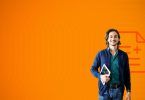Enterprise chatbots can help you deliver the intuitive, seamless, omni-channel experiences today’s employees expect while improving IT speed, efficiency, and productivity. By making ITSM more proactive, predictive, automated, and accurate, chatbots reduce cost, improve satisfaction, and free resources for higher priorities like multi-cloud management—helping the organization adapt to the dynamic demands of digital business. In fact, nearly a third of IT service desks will be putting artificial intelligence and machine learning to work by the end of next year.
As with any digital transformation initiative, though, it’s important to go about your chatbot implementation the right way to get the best results.
As a leader in AI-powered IT management, BMC Helix Chatbot has helped organizations of all kinds unlock the full value of chatbots to improve employee satisfaction and retention, streamline the service desk, and drive transformation. Here are seven operational best practices we’ve developed to ensure the success of your implementation.
Phase 1: Planning
1. Determine business outcomes and success
Every successful IT project begins with a clear business case—a problem to be solved. What are the metrics you’re seeking to improve with your chatbot? How will you measure the success of your implementation? Whether you aim to reduce costs, achieve process improvements or efficiencies, transform the user experience, improve user productivity, accelerate resolution, or boost the productivity and accuracy of your IT staff, make sure you’ve identified measurable, quantifiable business outcomes to track from beginning to end.
2. Identify use cases
To set the scope for your implementation, first decide what you want the chatbot to help you with, and how it will do so. It’s best to start small with 5 – 10 key services that are:
- Frequently requested, so you can achieve both high visibility and high impact
- Easily automated, so you can gain skills and experience for more complex use cases to follow
- Conversational, as suits the natural language nature of chatbot interaction
- Pervasive, so you can drive transformation broadly across your organization and user base
Make sure the services you select have up-to-date content and questions in your service catalog, including accurate knowledge for less frequent requests.
3. Map user access
Consider who your users are and the channels they’re already using, and use this information to decide how they can best access your chatbot. Once you’ve chosen the appropriate channels to focus on, define a campaign to roll out the new services, including targets for usage by various user types and channels.
4. Communicate
Make sure users understand your chatbot initiative—what it is, who it’s for, how it can be used, and so on. Begin by identifying your customer personas and the key benefits of the chatbot for each. Next, develop timelines communicating the value and timeline for each use case your chatbot will support. Remember, communication is a two-way street—use employee feedback to assess and improve the effectiveness of your messaging.
Phase 2: Implementation
5. Train your chatbots
Natural language processing and dialogue are foundational capabilities for a chatbot; make sure yours can hold a conversation. A touch of personality will boost user satisfaction and make people more likely to adopt it for regular use. On the substantive side, you’ll need to build a base of knowledge on the use cases you’ve chosen, including a historical view of issues and how people have requested them in the past. This will help develop the conversational dialogues your chatbot will rely on day-to-day.
6. Build your Bot
At this point, you’re ready to move your chatbot toward production. To connect it to your environment, use integration services to enable custom processes, and your digital workplace catalog for service listings and definitions. Once you’ve deployed the chatbot to the appropriate channels, make sure to test it thoroughly in terms of both performance and functionality—it’s crucial to make a good first impression to maintain the credibility of chatbot technology (and of IT in general).
Phase 3: Operations
7. Monitor and improve
Chatbots aren’t a set-it-and-forget-it technology. To make sure you’re meeting expectations, continue to monitor usage and measure key benchmarks against the targets you’d initially set. If you see sub-par metrics in some areas, supervised learning can help improve chatbot performance.
As both users and IT gain experience with your chatbot, you can begin to add new use cases. Users will likely ask about or suggest areas where chatbot functionality would be especially valuable—let their needs and expectations guide you. And as always, keep collecting feedback to make sure you’re providing the right experiences in the right ways to meet your goals.
As a high-visibility, high-value project, chatbot deployment can help set the tone and build momentum for your entire digital transformation agenda. In this light, getting it right will deliver powerful benefits for both users and IT. I hope these best practices help!
To learn more about using enterprise chatbots to meet employee expectations and drive transformation, read our white paper, “Empower the Digital Workplace with Enterprise Chatbots.” and find more information about BMC Helix.







